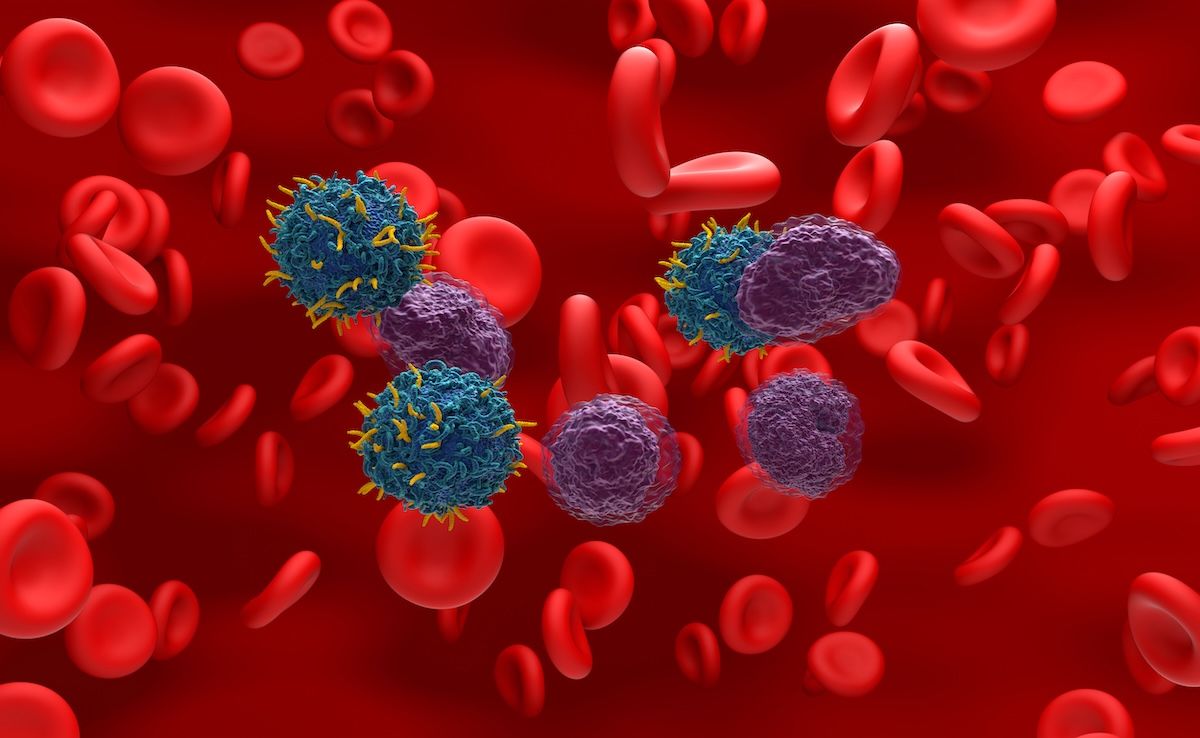Article
Risk Model Predicts Mortality in Patients With AML
Author(s):
Acute myeloid leukemia (AML) is the most common form of acute leukemia and has a poor 5-year survival rate, especially among older people. Cancer researchers have created a model that can predict mortality after AML treatment, so that it can help guide decision-making for patients and providers.
Acute myeloid leukemia (AML) is the most common form of acute leukemia and has a poor 5-year survival rate, especially among older people. Cancer researchers have created a model that can predict mortality after AML treatment, so that it can help guide decision-making for patients and providers.
The researchers said the analysis, conducted at 5 centers, is the first to test and validate the prognostic impact of comorbidities on 1-year mortality after initial AML therapy and a novel, risk-stratifying composite model incorporating patient-specific comorbidities, age, and cytogenetic and molecular risks. Results of the analysis were published in the December 2017 issue of JAMA Oncology.
AML cases are rising annually and the 5-year survival rate is only 26.6%. Survival rates are even lower among patients ages 65 to 74 years (5.3%) and 75 years or older (1.6%), who together make up more than 50% of new AML cases and who tend to have other illnesses.
In this retrospective cohort study, 1100 patients were randomly divided into a training set (n = 733) and a validation set (n = 367). Patients were ages 20 to 89 years; 605 (55%) were male, and 495 (45%) were female.
A series of comorbidities, including those already incorporated into the hematopoietic cell transplantation—comorbidity index (HCT-CI), were evaluated. In the training set, covariates associated with 1-year overall mortality at a significance level of P < .10 constructed a multivariate Cox proportional hazards model in which the impact of each covariate was adjusted for that of all others. Adjusted hazard ratios were used as weights. Performances of models were compared using C statistics for continuous outcomes and area under the curve (AUC) for binary outcomes.
The researchers said comorbidities influenced 1-year survival of patients with AML, and comorbidities are best captured by an augmented HCT-CI. The augmented HCT-CI, age, and cytogenetic/molecular risks could be combined into an AML composite model that could guide treatment decision-making and trial design in AML.
In the validation set, the original HCT-CI had better C statistic and AUC estimates compared with the AML comorbidity index for prediction of 1-year mortality. Augmenting the original HCT-CI with 3 independently significant comorbidities, hypoalbuminemia, thrombocytopenia, and high lactate dehydrogenase level, yielded a better C statistic of 0.66 and AUC of 0.69 for 1-year mortality.
A composite model comprising augmented HCT-CI, age, and cytogenetic/molecular risks had even better predictive estimates of 0.72 and 0.76, respectively.
Studying physical, cognitive, and social health might further clarify the prognostic role of aging. Targeting comorbidities with interventions alongside specific AML therapy might improve survival.
The study has several important implications for AML therapy. According to the researchers, treatment decisions for patients with newly diagnosed AML are based largely on age and an often subjective assessment of a patient’s fitness.
The use of the AML-CM by community internists will allow objective identification; older patients who have traditionally been offered palliative care might benefit instead from referral to receive either conventional or investigational AML therapy, which could lead to an increase in survival rates.
On the other hand, the AML-CM could identify patients unlikely to benefit from AML therapy, sparing them from various risks and toxic adverse events. In the future, the AML-CM might also be used to identify which patients would benefit more from intensive chemotherapy and which will be better served by targeted, less-intensive therapies,
The study took place between 2008 and 2012 at 5 institutions led by the Seattle Cancer Care Alliance (SCCA)/Fred Hutchinson Cancer Research Center (FHCRC), Massachusetts General Hospital, Cleveland Clinic, Stanford University, University of Utah.
Reference
Sorror, ML, Storer, BE, Fathi, AT, et al. Development and Validation of a Novel Acute Myeloid Leukemia—Composite Model to Estimate Risks of Mortality. Published online September 7, 2017. JAMA Oncol. doi:10.1001/jamaoncol.2017.2714





